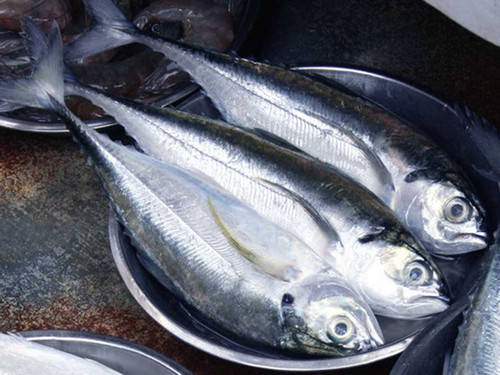Fish, Protein, Best Fish to Eat
 When you are preparing for a competition, maximizing your weight loss or just getting some seafood, you need to know the best fish to eat. Fish high in the omeg-3 fats and that taste good are your best choices. Other factors of safety come into play relative to the safety of fish and seafood.
When you are preparing for a competition, maximizing your weight loss or just getting some seafood, you need to know the best fish to eat. Fish high in the omeg-3 fats and that taste good are your best choices. Other factors of safety come into play relative to the safety of fish and seafood.
Some fish are higher in fats, often used by the fish to help absorb and maintain heat. Coldwater fish often have higher contents of this fat, which has been proven by the literature to help with many diseases and specifically with lowering cholesterol. As fitness enthusiasts, you should consider that eating the fat from fish is very different than eating the fat from a land animal.
Unfortunately, the consumption of seafood results in an intake of the toxins associated with them. Mercury is a heavy metal and is often associated with seafood. The production of pollution results in mercury in our lakes, ponds and oceans, which are then absorbed by the seafood. The U.S. Department of Health (FDA) and the U.S. Environmental Protection Agency (EPA) have released some guidelines for eating fish and avoiding toxic side effects. Fish and seafood are low in saturated fats and high in omega-3s and other nutrients.
Some seafood and fish have been known to have higher concentrations of mercury. Young children and pregnant women are at the greatest risk of mercury poisoning. They should avoid the following fish and seafood, according the FDA and the EPA.
• Do not eat shark, swordfish, king mackerel, or tilefish because they contain high levels of mercury.
• Eat up to 12 ounces (2 average meals) a week of variety of fish and shellfish that are lower in mercury.
• Five of the most commonly eaten fish that are low in mercury are shrimp, canned light tuna, salmon, Pollock, and catfish.
• Another commonly eaten fish, albacore (“white”) tuna has more mercury than canned light tuna. So when choosing your two meals of fish and shellfish, you may eat up to 6 ounces (one average meal) of albacore tuna per week.
• Check local advisories about the safety of fish caught by family and friends in your local lakes, rivers, and coastal areas. If no advice is available, eat up to 6 ounces (one average meal) per week of fish you catch from local waters, but don’t consume any other fish during that week.
Follow these same recommendations when feeding fish and shellfish to your young child, but serve smaller portions.
What is mercury and methylmercury? Mercury occurs naturally in the environment and can also be released into the air through industrial pollution. Mercury falls from the air, and once it hits the water in streams and oceans, it’s turned into methylmercury. Fish and seafood absorb the methylmercury, which can be harmful to any human.
The fish and seafood from hatcheries are not exposed to pollutants like those from the commercial fishing industry. The water in hatcheries is from a natural source. Hatcheries are usually self-contained, and in some cases they use filtered water. Many states now require the origination of the fish to be marked on the product. Florida is a leader in this endeavor and requires the fish to be marked what hatchery that it is from. Yellow perch, for example, is one of the least contaminated fish in the Ohio Valley. Organizations like the Ohio Department of Natural Resources are great for information about the safety of fish and other wildlife.
Some seafood has a natural ability to aid in fat metabolism. Orange roughy and other white fish have the ability to metabolize fats. The exact mechanism is not known, but it is believed to be associated with the overall content of highly potent fish oils. Eating large amounts of orange roughy results in some rather embarrassing side effects, but you usually have to eat over 8 oz. to achieve this reaction. There is no question that the fish of choice by the elite physique professionals is orange roughy.
Orange roughy was originally caught off the coast of New Zealand. The fish was initially rather inexpensive and cost less than a few dollars a pound. Eventually the popularity of the fish grew exponentially, and the price of the fish also jumped exponentially.
There is nothing wrong with eating seafood, but making the right choices will allow you to enjoy life to its fullest. The taste and your particular availability will help determine the best fish for you.

